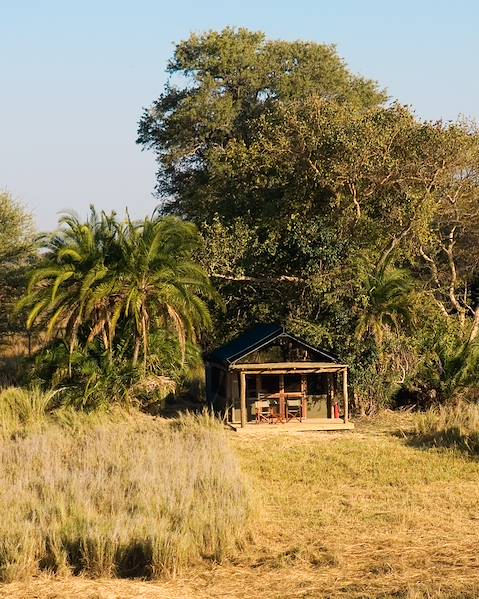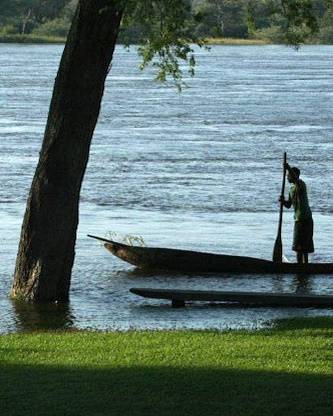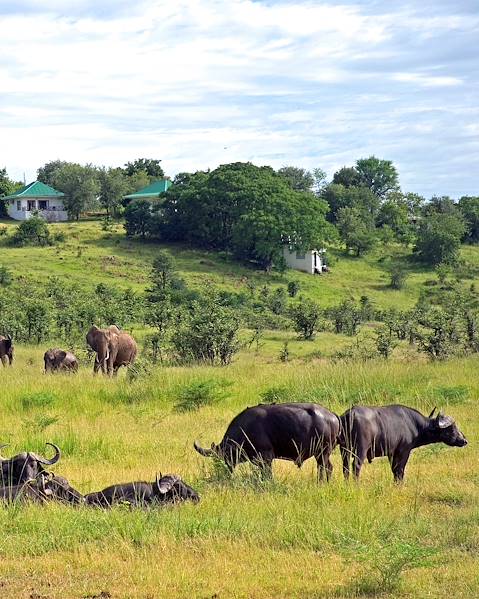Home to the famous Victoria Falls, the game-rich Luangwa National Parks and the magnificent Zambezi River, Zambia is brimming with adventure and romance. Don’t be surprised if you encounter a more relaxed attitude to punctuality while you’re here – this is the norm in Zambia, and the perfect pace of life for lazy afternoons and sundowners with a view across the savannah. You might find that internet speeds are slower than you’re used to, but when you have groups of hippos at watering holes and playful elephants to keep you entertained, who cares? This wild and wonderful country has so much to offer, and we’ve put together this list of things to know before travelling to Zambia so you can make the most of your safari adventure.
Packing for Safaris
Most of your time here will likely be spent traversing grassy plains in search of the famous Big Five (lions, leopards, rhinos, elephants and buffalo). Many game drives take place in the early morning or at night, which can get chilly despite Zambia’s generally warm climate. Come prepared with fleeces and warm clothing as well as t-shirts and shorts for daytime excursions. A long-sleeved shirt is another essential: it helps to shield you from the sun’s rays and is useful for protecting against mosquito bites in the evening. Most of your clothing should be dark green, brown or beige to help you blend in with the bush, increasing your chances of spotting a prowling lion or grazing buffalo unnoticed. Remember that tsetse flies are attracted to black and dark blue, and steer clear of camouflage, as military-style clothing is prohibited. If you’re planning to try a walking safari – and we think you should – pack a pair of sturdy, comfortable walking shoes. Other than that, don’t forget your camera for capturing moments you’ll never want to forget.
Customs and Culture
There are over 70 different tribes living in Zambia’s ten provinces, each with their own set of customs, traditions and practices. While nobody expects you to learn them all, there are a few common social conventions to be aware of which will help you to communicate and remain respectful during your trip. First, always greet people before beginning a conversation or asking a question. If you are introduced to someone, shake their hand as you greet them. If you’re lucky enough to receive gifts during your stay, never refuse them as they are a sign of friendship and appreciation. Instead, accept them gratefully using both hands. Finally, when visiting rural areas, cover your thighs and shoulders, as skimpy clothing can cause offense.
Food and Drink
Zambian cuisine is traditionally based on nshima, a porridge-like dish made from ground maize. It’s usually served with meat, relish or vegetables, and is eaten in homes up and down the country as well as in lodges and hotels. This carbohydrate-rich dish is a staple of the Zambian diet, so we highly recommend you try it at least once during your stay.
In some of Zambia’s major towns, tap water is safe to drink, but it’s best not to risk drinking it in rural areas. The staff at your accommodation can advise you on this, but if you’re unsure, boil water first or stick to bottled water. Alcohol is a big part of Zambian culture, so make sure to kick back with a Mosi or Rhino lager as you chat with locals, enjoy the sunset or gaze at the starry skies.
Seeing the Sights
Meaning ‘Great River’ in the language of the Tonga people, the majestic Zambezi River crosses the boundaries of six countries and includes one of the world’s Natural Wonders, Victoria Falls, along its course. We’re sure that both the Zambezi and Vic Falls (as it’s dubbed locally) are already on your must-see list, but how you choose to experience them might still be up for debate. For a relaxing way to take in your surroundings, we can organise boat trips down the Zambezi that are perfect for spotting wildlife or simply taking in the sunset. If you fancy something a little more thrilling, the famous Devil’s Pool is located almost mid-way across the top of Victoria Falls, giving you an unparalleled (if slightly daunting) experience from a dizzying height of 350ft.
Back on land, safaris are the way to experience Zambia. The wild and wonderful South Luangwa National Park is Zambia’s most well-known safari destination, and we can arrange for you to stay in a remote bush camp deep in the park’s savannah. Your first moments inside the gates might involve seeing crowds of hippos lazing about the river, while your first evening promises a spectacular sunset. Kafue National Park is another of Zambia’s safari spots, the oldest and largest protected game area in the country. Lions, zebras and birds populate the north, while in the south you’ll likely spot elephants and antelopes.
Weather
Zambia has a sub-tropical climate with three distinct seasons: hot and dry (September to November), wet (December to April), and cool and dry (May to August). Between May and August, it’s typically around 10°C in the mornings, but days warm up significantly to between 20 and 25°C. This season falls right after wet season, so the earlier you travel, the more forceful and spectacular Victoria Falls will be. In September and October, temperatures reach an average of 31°C. Bear in mind, however, that lower-lying parks such as South Luangwa and Lower Zambezi are significantly warmer, and temperatures can climb above 40°C. During the hot and dry season, the falls dry up significantly on the Zambian side, so you might need to cross over to Zimbabwe to see them flowing in all their glory. This does, however, make it the perfect time for water sports such as white water rafting and swimming to Devil’s Pool, which aren’t always possible earlier in the year due to unsafe water levels. Wet season isn’t ideal for visiting Zambia as the humidity level is uncomfortably high and heavy rains make it difficult to get around.
















